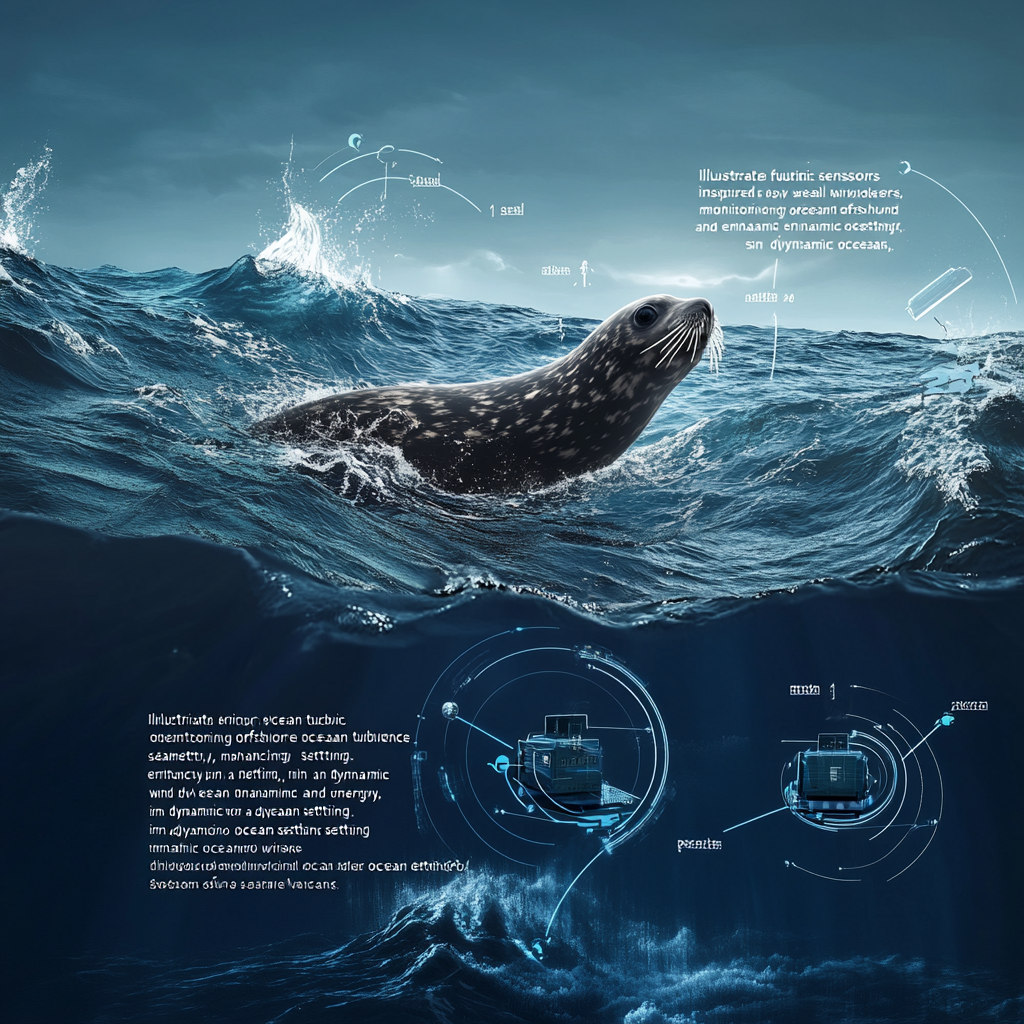
Biomimetic Sensor Mimics Seal Whiskers for Ocean Flow Detection
Whiskers and Waves: The Seal-Inspired Sensor Shaping Our Understanding of Ocean Turbulence
In the vast, tumultuous realm of the ocean, where waves rise and fall like the emotional pendulum of a soap opera star, seals stealthily glide through the depths, guided by their exquisitely sensitive whiskers. These furry navigators, seemingly innocuous at first glance, possess a sensory prowess that would make even the most advanced technology blush with envy. Their whiskers capture the energies of the ocean in ways that we, the mere mortals of the land, are only beginning to comprehend. These biological marvels have given birth to a new breed of sensors, destined to transform how we monitor the roiling chaos of ocean turbulence.
Decoding the Whisker Wonders
Let’s dive into the science behind those whiskers! Picture this: seals adeptly navigating through murky waters, hunting prey with the finesse of a seasoned detective solving a complex mystery. Their whiskers—those magnificent, twisted cylinders—are finely tuned instruments for detecting the faintest vibrations, changes, and perturbations in their environments. With a sensitivity that would make your average GPS feel like a clunky, outdated relic, these whiskers allow seals to thrive in habitats where visibility is as good as the lighting in a dingy nightclub.
To break it down: the geometry of seal whiskers? Pure genius! They are designed to respond to environmental cues with astonishing precision, picking up shifts in ocean currents that could escape the notice of even the most focused human observer. Researchers have begun to mimic this natural engineering in the lab—a bold endeavor not merely born of admiration but rooted in necessity.
Nature Meets Innovation
Cue Dr. Yaqing Jin, an audacious mind at the University of Texas at Dallas, who has dedicated her research to bridging the gap between nature's finesse and human engineering. In her lab, they’re not just tinkering; they're channeling the prowess of these whiskers into something tangible—sensors that promise to redefine the surfaces of ocean turbulence monitoring.
Imagine a vast water channel, 6 feet long, glistening under a harsh fluorescent light, where researchers orchestrate water movements like a conductor leading an orchestra. Jin’s team diligently simulates oceanic conditions, employing a pump to recreate the dynamic flow and turbulence that characterize the world’s oceans. They’ve been rigorously testing these 3D-printed marvels, quantifying their responses to varying water speeds and directions, and the results are nothing short of promising. A recent paper in Physical Review Fluids would have you believe that wilderness-inspired designs might just hold the key to future innovations.
Riding the Waves: Offshore Energy Applications
Now let’s get to the exciting bit—what’s the real-world application of these sensors? Spoiler alert: it’s got to do with those towering giants we call offshore wind turbines. These sleek, modern sentinels are hailed as heroes in the quest for cleaner energy, but, oh boy, they don’t always get an easy ride! Mother Nature can be a ruthless diva, portraying strong storms and violent turbulence that threaten the integrity and lifespan of these turbines.
What if Dr. Jin's whisker-inspired sensors could provide early warnings about worsening conditions? The very thought is electric! Picture technicians enjoying a bit of an early knockoff break, safe from the encroaching chaos while the turbines brace themselves against nature's fury. A radar, perhaps, for turbulence? Unlike traditional sonars that rely on disruptive sound waves—think of it as the thumping bass interrupting the delicate conversation—the new sensors work quietly, conserving the serene environment that so many marine creatures call home.
Beyond the Water: A Holistic Approach
But Jin’s ambition doesn’t stop there. She’s exploring the effects of wind on turbines as well! In a lab outfitted with a sand-blowing atmosphere akin to a desert storm (minus the cactus), her research encompasses everything from underwater foundations to the crown jewels—the turbine blades poking their heads above the waves. This thorough research ensures that when we say “safe energy,” we mean it—not just for us, but for marine ecosystems, too.
A Brighter Future in Clean Energy
As society drifts increasingly toward sustainable energy solutions, offshore wind production emerges as a golden ticket. These namely turbine constructs hold more promise to produce greater energy potential than their terrestrial counterparts, marking a major win for clean energy strategies. And with tech like Jin’s seal whisker-inspired sensors paving the way, we are not merely dreaming—we are building a bridge to a greener, more dependable future.
Conclusion: The Journey Ahead
In the tapestry of technology, the transition from nature-inspired innovation to practical application is a fairy tale, a gripping narrative full of twists and turns. The journey of the seal whisker-inspired sensor unfolds like a gripping novel; it’s an evolution that promises to enhance our understanding of ocean turbulence and bolster our efforts towards a safer, sustainable energy future. So, as we ride this wave of innovation, let’s remember one thing—nature’s designs are timeless blueprints, and it’s up to us to honor them with ingenuity and respect.
Want to stay up to date with the latest news on neural networks and automation? Subscribe to our Telegram channel: @channel_neirotoken

